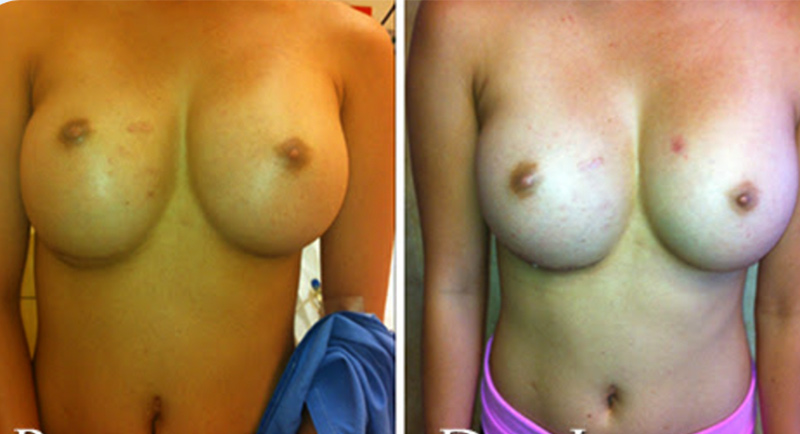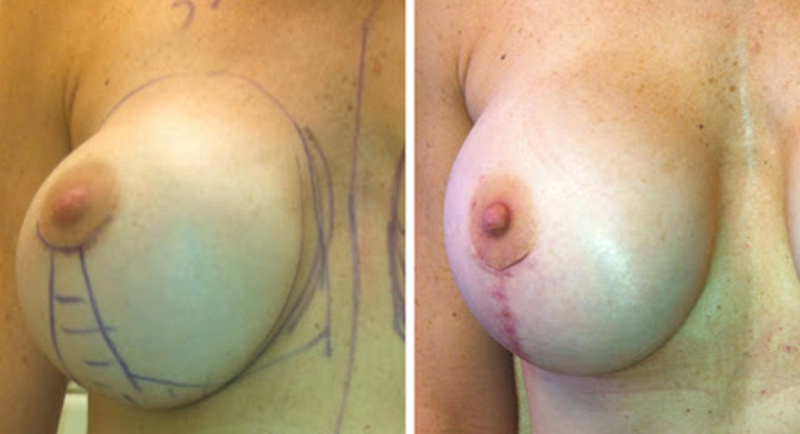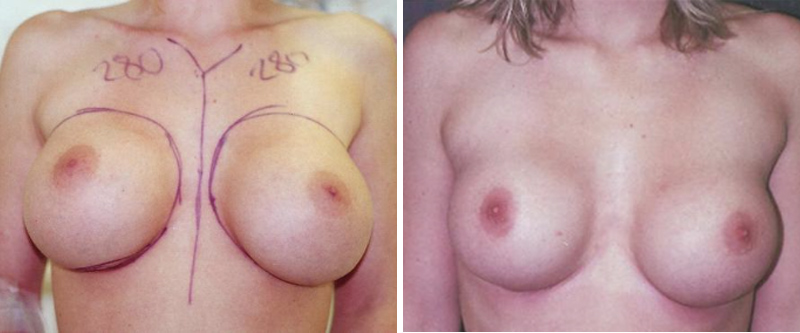Breast Implant Bottoming Out
Posted On: January 02, 2025 Author: The Office of Dr. Stuart Linder Posted In: Bottoming Out, Breast Implants
Bottoming out is a term used to describe a complication that can occur after a breast augmentation surgery. It happens when the breast implant drops too low on the chest, causing the nipple to appear too high on the breast mound. This can create an unnatural look and may lead to discomfort or dissatisfaction with the results.
Causes Of Bottoming Out:
- Weakened tissue or skin (thin or weak tissue may not provide enough support for the implant)
- Oversized Implants (implants that are too large can put excess strain on the tissue)
- Gravity And Time (natural changes over time can exacerbate this issue)
Signs Of Bottoming Out:
- The lower pole of the breast appears stretched
- The nipple is positioned unusually high on the breast mound
- The imframammary fold (the crease under the breast) may have shifted downward
Treatment:
Revision Surgery: repositioning, reinforcing the tissue, adjusting implant size, tissue support using surgical mesh for added support
Below are few patients that came to Dr. Linder to correct their bottoming out.
Case Study 1
Bottoming Out Repair Inferior Capsulorrhaphy
The patient presents with severe bottoming out of the right breast, requiring reconstructive surgery, including a superior right open capsulectomy, reshaping and opening up the upper pole of her implant pocket, as well as performing an internal inframammary capsulorrhaphy suturing the release capsule approximately 1.25 inches up. Subsequently, the inframammary skin was then removed, performing an inframammary tightening procedure. Her preoperative photos show not only disproportionately too large implants for her, but improper positioning of the implant causing raising of the nipple and bottoming out of the implant down approximately 1.25 inches below the left side.
The patient underwent open capsulotomy, removal and replacement with high profile saline implants, inframammary inferior internal capsulorrhaphy and inframammary skin tightening. Her three-month postoperative photos show good inframammary fold symmetry with the right nipple areolar complex lowered and slightly more symmetric than preoperative. Patient feels the implants are more appropriate to her shape and the inframammary fold has tightened nicely.
Bottoming out is a severe complication and can be very difficult to repair, especially with thin capsules. Luckily, this patient has thicker capsule that could be released from the pectoralis major and superior rectus abdominis muscle attachments and acting as a sling to allow the implant to be elevated to regain symmetry.

Case Study 2
Bottoming Out / Lift & High Profile Replacement
Bottoming out may occur from either gravitational descent of the implants over time or technical error leading to excessive lowering of the inframammary fold . Correction may include capsuloraphy or inframammary tightening with a formal lift .
In this case correction included implant exchange with High profile implant and breast lift .

Case Study 3
Bottoming Out and Downsizing of the Breast
The patient below presented from out-of-state with enormously disproportionate breasts. She is only 26 years of age; however, even at her age she believes the implants a way too large for her body. She desired to have those removed and replaced with smaller silicone gel implants and an internal capsulorraphy and inframammary tightening procedure was performed to recentralize the nipple areolar complex to the middle of her breasts. The preoperative photos show disproportionately large breast implants which the patient felt were too large for her body and also causing back pain. The implants were so large that they were leading to bottoming out as well as where there was inferior displacement of the implants with the nipple now migrating superiorly towards the top of her breast mound.
The patient underwent, through inframammary incision only, open capsulotomy, removal and replacement with smaller silicone gel implant by 225 cc reduction in size of implants, and subsequently an inframammary tightening procedure through the inframammary mastopexy well hidden along the inframammary fold. The patient has done well and this is her three-month postoperative photos. This is an example of bottoming out that can be corrected by an inframammary skin lift with a small internal capsulorraphy along the inframammary fold and a downsizing with significantly smaller implants.

To schedule your consultation with Dr. Linder or learn more about bottoming out or breast revision surgery, call our office at 310-275-4513 or fill out our online contact form today.